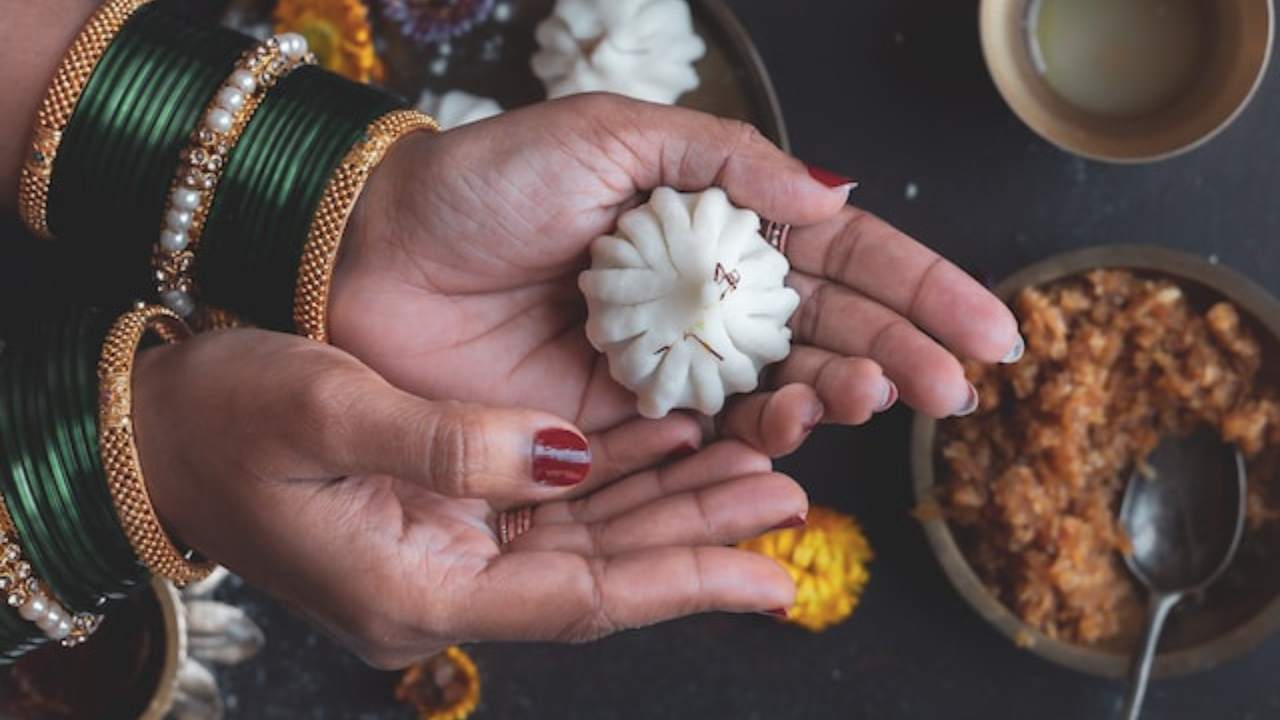We share some of the most popular sweets for Ganesh Chaturthi, from lip-smacking Modaks, Lord Ganesha’s favourites, to Karnataka’s Obbattu, a variation of Puran Poli.
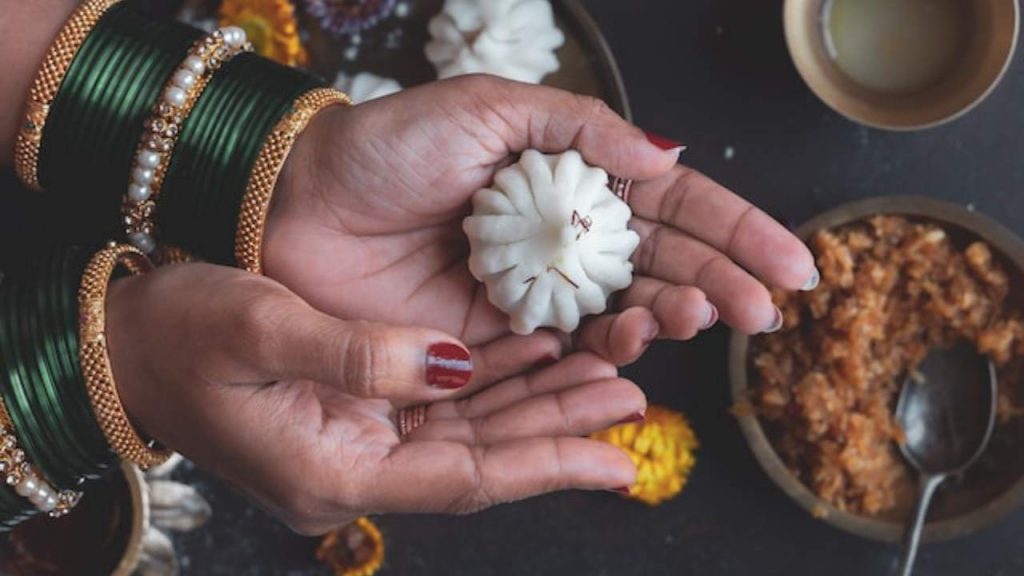
Ganesh Chaturthi is one of the grandest festivals of India and is celebrated festivals in many states. But the celebrations is not just about worshipping Lord Ganesha but also to relish the many sweets that are prepared during the festival.
Like every other Indian festival, sweets hold a special place in Ganesh Chaturthi, and each region of the country has their own unique and mouthwatering creations.
Let us learn about the types and variations of Ganesh Chaturthi sweets that people get to eat during Ganesh Chaturthi celebrations. While we are it, let us also learn a bit about Ganapati’s favourite sweet – Modak!
1. Maharashtra – Modak, the Unrivaled King
In the heartland of Maharashtra, no sweet quite reigns supreme like the Modak. Lord Ganesh’s favourite dumplings, Modaks come in two varieties: the steamed Ukadiche Modak, with a delicate rice flour covering filled with coconut, jaggery, and cardamom, and the fried or baked version known as Talniche Modak. If you’re feeling adventurous, try your hand at making them at home:
Ukadiche Modak Recipe:
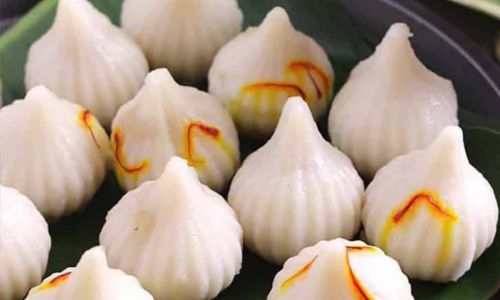
Ingredients:
- 1 cup rice flour
- 1 cup grated coconut
- 1/2 cup jaggery
- 1/2 tsp cardamom powder
- A pinch of salt
Method:
- Prepare a dough from rice flour, salt, and hot water.
- Shape small balls of dough into cups, stuff with the coconut-jaggery mixture, and close the tops.
- Steam until they are soft and enjoy!
Talniche Modak Recipe:
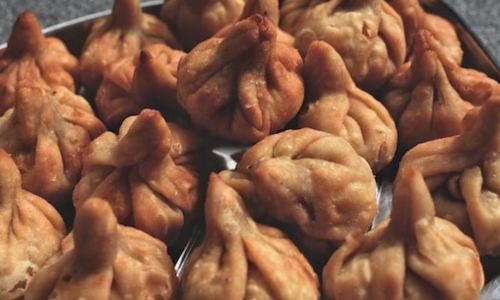
Talniche Modak is a specialty from the coastal state of Goa. These modaks are quite distinct from the traditional steamed or fried modaks and are made from a mixture of sesame seeds, jaggery, and grated coconut. They offer a unique blend of flavors and textures, making them a must-try during Ganesh Chaturthi. Here’s a simple recipe to prepare these delicious treats:
Ingredients:
- 1 cup sesame seeds
- 1/2 cup grated jaggery
- 1/2 cup grated coconut
- A pinch of cardamom powder
- Ghee (clarified butter) for greasing your hands
Method:
- Start by dry roasting the sesame seeds in a pan until they turn golden brown. Keep them aside to cool.
- In the same pan, add the grated jaggery and a tablespoon of water. Heat it over low flame until the jaggery melts and forms a thick syrup. You can check the consistency by dropping a bit of syrup into a bowl of water; it should form a soft ball.
- Add the grated coconut, roasted sesame seeds, and cardamom powder to the jaggery syrup. Mix everything well.
- Allow the mixture to cool slightly so that you can handle it comfortably.
- Grease your palms with a little ghee and start shaping the mixture into modak-like cones.
- Place the Talniche Modaks on a greased plate and let them cool and set completely.
Your delicious and unique Goan Talniche Modaks are ready to be offered to Lord Ganesha.
2. Tamil Nadu – Sweet Kozhukattai, the Elegance of Simplicity
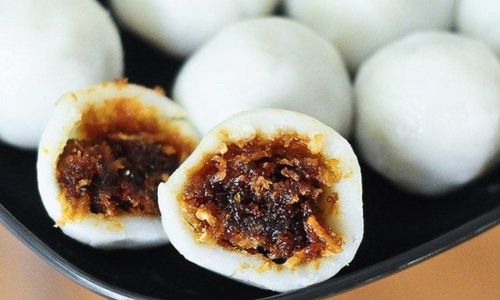
(Image: Cookingwithme)
In the southern state of Tamil Nadu, Sweet Kozhukattai takes center stage. These rice flour dumplings, stuffed with a mixture of grated coconut, jaggery, and cardamom, are a culinary delight. The elegance of this dish lies in its simplicity. Here’s how you can prepare it:
Sweet Kozhukattai Recipe:
Ingredients:
- 1 cup rice flour
- 1 cup grated coconut
- 1/2 cup jaggery
- 1/2 tsp cardamom powder
- A pinch of salt
Method:
- Prepare a dough from rice flour, salt, and hot water.
- Shape the dough into small cups, stuff them with the coconut-jaggery mixture, and close them.
- Steam them until they are soft, and they’re ready to be served.
3. Andhra Pradesh – Poornam Boorelu, the Sweet Surprise
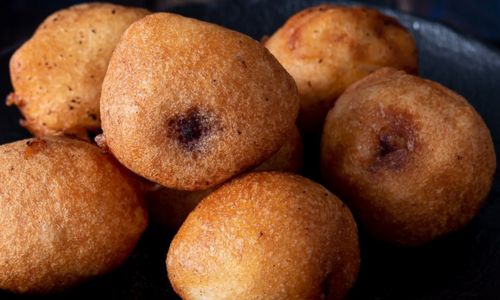
(Image: Masalakorb)
In the vibrant state of Andhra Pradesh, Ganesh Chaturthi is incomplete without Poornam Boorelu. These sweet, deep-fried lentil balls are stuffed with a mixture of chana dal, jaggery, and coconut, resulting in a delightful blend of flavors and textures.
Poornam Boorelu Recipe:
Ingredients:
- 1 cup chana dal (split chickpeas)
- 1 cup jaggery
- 1/2 cup grated coconut
- A pinch of cardamom powder
- A pinch of salt
- Oil for frying
Method:
- Soak chana dal for a few hours and grind it into a coarse paste.
- Cook the paste with jaggery until it thickens.
- Add grated coconut and cardamom powder to the mixture.
- Shape the mixture into small balls, coat them with rice flour batter, and deep fry.
4. Karnataka – Obbattu, the Sweet Flatbread
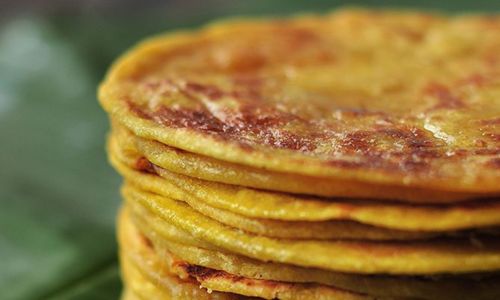
(Image: Madaboutkitchen)
Karnataka’s Obbattu, is just like Maharashtrian Puran Poli with a different name and a bit of variation in taste and a ‘South Indian’ touch. The filling, made from chana dal, jaggery, and cardamom, is encased in a thin layer of wheat or maida dough. It’s a perfect balance of sweetness and nutty flavors.
Obbattu Recipe:
Ingredients:
- 1 cup chana dal
- 1 cup jaggery
- 1/2 tsp cardamom powder
- Wheat or maida dough
Method:
- Cook chana dal until soft, drain any excess water, and mash it.
- Cook the mashed dal with jaggery and cardamom powder until it thickens.
- Roll out thin dough circles, place a spoonful of the dal mixture, and seal the edges.
- Cook on a griddle with ghee until golden brown.
5. West Bengal – Sandesh, the Creamy Elegance
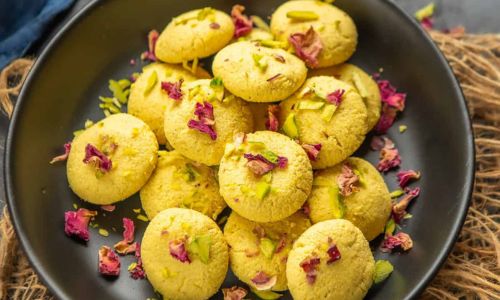
(Image – Whiskaffair)
In the eastern state of West Bengal, Sandesh reigns supreme as the Ganesh Chaturthi sweet of choice. This delectable dessert is made from fresh paneer (chhena), sugar, and a touch of cardamom. It has a delicate texture and a subtle amount of sweetness.
Sandesh Recipe:
Ingredients:
- 1 cup fresh paneer (chhena)
- 1/4 cup powdered sugar
- A pinch of cardamom powder
Method:
- Knead the paneer until it’s smooth.
- Add powdered sugar and cardamom powder, and mix well.
- Shape the mixture into small discs or any desired shape, garnish with pistachios, and chill before serving.
Other Delights for Ganesh Chaturthi:
Apart from these special sweets for Ganesh Chaturthi, there are many other sweets and treats that are equally relished during Ganesh Utsav. Lets check some of the sweets prepared at home during Ganesh Chaturthi.
Puran Poli (Maharashtra)
This sweet flatbread made with chana dal, jaggery, and cardamom is a not-to-be-missed delicacy and if you have not had one yet, you are missing a ‘bigggggg thinggggg’. Try some at the earliest..
Besan Ladoo (Punjab)
These are sweet, aromatic ladoos made from roasted gram flour, ghee, and sugar. The Northern parts of India like besan ladoos most.
Coconut Ladoo (Pan India)
Simple yet irresistible, these ladoos blend grated coconut, condensed milk, and cardamom. All of you must have had those nariyal ladoos growing up, right?
Kheer (Pan India)
A creamy rice pudding, often garnished with almonds, saffron, and rose petals.
Shira (Pan India)
Also known as Suji Halwa, this semolina pudding is rich and fragrant with ghee and cardamom. There is a variation of Shira in Maharashtra with the addition of mashed ripe bananas, which add natural sweetness and enhance the flavor. This delightful and nutritious dish is enjoyed by many.
Modern Twists and Trends:
In today’s fast-paced world, traditional sweets have undergone fascinating transformations while staying true to their essence. Here are some modern variations that cater to diverse tastes:
Chocolate Modaks: A delightful fusion of traditional modaks with the richness of chocolate.
Dry Fruit-Stuffed Kozhukattai: Elevate the classic Tamil Nadu sweet by adding a medley of dry fruits.
Modak-Flavored Ice Cream: Creamy ice cream infused with the essence of the beloved modak.
Fruit-Flavored Sandesh: A refreshing twist on the Bengali classic, with fruity flavors like mango and pineapple.
Kheer Parfait: Layered kheer with fruits and nuts for a contemporary twist on the timeless favorite.
Baked Obbattu: A healthier take on the Karnataka favorite, baked instead of fried.
Vegan Variations: With increasing dietary preferences, many sweets now come in vegan versions using plant-based ingredients.
So, this Ganesh Chaturthi, as you prepare to welcome Lord Ganesha into your home, savor these sweet delights from different corners of India. Whether you choose the timeless classics or the contemporary renditions, let the spirit of this festival fill your heart and your taste buds with joy.
Whichever sweer you prefer this Ganesh Chaturthi, remember one thing – The real sweetness comes from sharing with others who are less fortuate. So go and spread the sweetness! Ganpati Bappa Morya!
FAQS
Q. What are the traditional sweets made during Ganesh Chaturthi?
A. Traditional sweets include Modak, Laddu, Kheer, Puran Poli, and Coconut Barfi.
Q. What is the significance of Modak during Ganesh Chaturthi?
A. Modak is believed to be Lord Ganesha’s favorite sweet. It symbolizes his love for wisdom and knowledge.
Q. How is Ukadiche Modak prepared?
A. Ukadiche Modak is made from rice flour dough stuffed with jaggery and grated coconut, then steamed.
Q. What is the recipe for Besan Ladoo for Ganesh Chaturthi?
A. Besan Ladoo is made from roasted gram flour, ghee, sugar, and flavored with cardamom. It’s then shaped into round balls.
Q. Can you explain the recipe for Sheera (Sooji Halwa) during Ganesh Chaturthi?
A. Sheera is made from semolina (sooji), ghee, sugar, and flavored with cardamom and saffron.
Q. What are some popular sweets prepared during Vinayaka Chaturthi in South India?
A. In South India, some popular sweets include Pala Munjalu, Chalimidi, and Undrallu, among others.
Q. Are there any modern variations of traditional Ganesh Chaturthi sweets?
A. Yes, modern twists include chocolate modak, dry fruit modak, and baked versions of traditional sweets.
Q. What are some healthy alternatives to traditional Ganesh Chaturthi sweets?
A. You can make sweets using ingredients like dates, figs, and nuts for a healthier option.
Q. Can non-Hindus also enjoy and prepare Ganesh Chaturthi sweets?
A. Absolutely! The festival is a celebration of culture and can be enjoyed by people of all backgrounds.
Q. How can I make Ganesh Chaturthi sweets at home if I’m not familiar with Indian cooking?
A. There are many online resources and recipes available that provide step-by-step instructions for making these sweets.
Q. What is the importance of offering sweets to Lord Ganesha during the festival?
A. Offering sweets symbolizes devotion and seeks Lord Ganesha’s blessings for a sweet and prosperous life.
Q. Is there a specific sweet that is considered the most auspicious during Ganesh Chaturthi?
A. Modak is considered the most auspicious sweet during this festival.
Q. What is the role of sweets in community celebrations during Ganesh Chaturthi?
A. Sweets are distributed among the community as prasad, fostering a sense of togetherness and unity.
Q. Can I buy Ganesh Chaturthi sweets online if I don’t have time to prepare them at home?
A. Yes, many confectioneries and online stores offer a variety of sweets during the festival.
Q. Are there any specific sweets associated with the immersion (Visarjan) of Lord Ganesha’s idol?
A. People often prepare special sweets for the farewell, such as Puran Poli and Tilgul Ladoo.
Last Updated on January 9, 2025 by Staff Reporter

